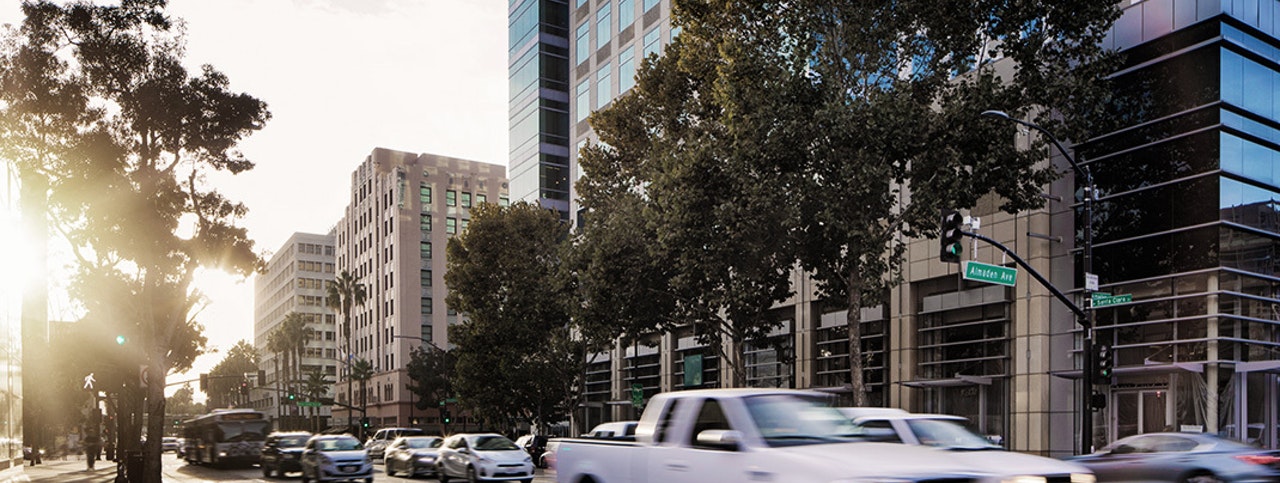Even San Jose – the paragon of tech innovation – isn’t immune to disruption. Despite its high concentration of leading global firms, digital innovation, and highly skilled workers, the coronavirus has forced the city to address job loss, a growing digital divide, and potential competition for talent and employers. San Jose needs to collaborate with its pioneering tech firms and creative employees to give Americans what they want: internet connectivity and job retraining.
Like many cities, San Jose has experienced significant job loss due to the pandemic. Unemployment in the San Jose-Sunnyvale-Santa Clara metro area reached 9.4 percent in July 2020, a more-than six percentage point increase from the previous year. While the leisure and hospitality sector saw the biggest declines in employment, other sectors such as education, healthcare, and government also were impacted. Even the city’s sizable tech sector – which accounts for about a third of its workforce – has not been spared, with Santa Clara County, which includes San Jose, losing 13,800 tech jobs in April.
Beyond job losses, COVID-19 has made many jobs completely remote, focusing attention on the digital divide and challenging the ability of cities like San Jose to retain talent. According to an Oliver Wyman Forum survey completed in early June 2020, 57 percent of US workers worked remotely more or for the first time during stay-at-home orders. Of this group, nearly two-thirds said they will likely or definitely continue after lockdown orders are lifted.
With jobs no longer tied to fixed physical locations and face-to-face meetings, many more skilled workers in tech and other sectors are able to move to other locations. Recent surveys suggest that San Jose could benefit from the current flight of tech workers from nearby San Francisco, but San Jose may lose talent to smaller tech hubs that are competing for workers and companies. Tech industry jobs in mid-sized cities such as Salt Lake City and Orlando rose nearly 27 percent during the last decade. Many of these cities are leveraging their cheaper cost-of-living, attractive amenities, and top-ranked universities to attract companies and jobs.
But Americans are looking for more than amenities and cheaper living costs: Forty-one percent of Americans said that job matching services and retraining opportunities should be among the top services available after COVID-19, according to an Oliver Wyman Forum survey.
Retaining talent and the associated jobs, particularly those in tech, is critical to securing San Jose’s future. According to our research, 34 percent of jobs – largely in retail, service, and office administration roles – in San Jose were already at risk of AI disruption before the crisis; the pandemic will only exacerbate job loss to automation. Fortunately for San Jose, that’s a lower percentage than emerging tech hubs like Raleigh and Austin and fellow old guards like New York and San Francisco.
And while public-private partnerships have contributed millions of dollars to initiatives like Silicon Valley Strong, a relief effort to aid small businesses, residents, and community organizations affected by COVID-19, the city lacks a strong partnership to fill any gaps in retraining and job matching services for displaced workers. San Jose’s partnership with a telecommunications firm to provide digital training to previously homeless persons in city-provided homes is a step in the right direction, but it’s a small-scale operation with only 40 participants. There’s certainly room for growth.
Job retraining initiatives fueled by public-private partnerships are popping up across the US, like in Austin, Texas and Rhode Island. With San Jose’s top-tier firms, there’s no reason why the San Jose can’t do the same.
The pandemic has also exacerbated San Jose’s digital divide. In a city that’s synonymous with cutting-edge technology, at least 11,000 children lost access to education during stay-at-home orders. More broadly, 95,000 residents in San Jose – about nine percent of the city population – lack internet access at home.
Fifty-seven percent of surveyed Americans said that connectivity infrastructure was among the most-desired services after the coronavirus – again posing an opportunity for San Jose to flex its tech muscles to attract more residents. The city is working to expand high-speed, wireless network coverage for underserved populations. Much of this work will be done through the San Jose Digital Inclusion Fund, a public-private partnership that aims to provide device and internet access to 50,000 households and to equip them with fundamental digital skills.
San Jose has a solid foundation to build on for continued success. Ranking sixth among 29 small cities in the Oliver Wyman Forum’s Global Cities AI Readiness Index, its workforce is among the most highly skilled in the world, and it offers a high quality of life. San Jose should leverage these strengths to address the vulnerabilities exacerbated by COVID – the risk of talent loss and the digital divide – and to maintain its status as a resilient, preeminent tech hub.

